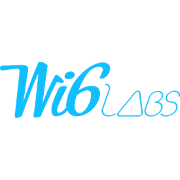WI6LABS acts and fights against noise pollution
No less than 80 footbridges and 45 knots have been installed by WI6LABS in the city of Lorient in order to act daily against noise pollution.

Installation of an autonomous node
2nd source of pollution after air pollution
Reducing noise pollution is a major challenge, particularly in urban areas, where many sources of noise are concentrated. In a context where noise harms human health, regulations are pushing for a sharp reduction in noise pollution and require cities such as Lorient to produce noise maps.

Sensor coverage area in downtown Lorient
What is ANR Cense project ?

Thus, the ANR Cense project was set up, led by the Gustave Effel Institute (formerly Ifsttar), an agency of the Ministry of the Environment. The aim of the project is to provide a characterization of urban noise by combining simulation, via simulated noise maps of the city, and real measurements, via a low-cost wireless sensor network.
More information is available on the project page.
In order to evaluate traffic, street and nature noises (e.g. birds), sensors installed in the city record each noise / sound source anonymously. The spectral image of the sound is thus traced back and allows source detection. The Leq and LAeq sound level measurements are uploaded, as well as environmental data. By combining these data, we are able to characterize the type of noise as well as its level. A psycho-acoustic analysis of the environment then allows us to understand the perception of the different sound sources. For example, at the same sound level, the auditory perceptions of a bird or a high-pitched voice are different.
The role of WI6LABS
WI6LABS provides the wireless sensor network, gateways, and urban noise measurements.
As an expert in low-power and secure sensor networks, WI6LABS measures and calculates noise indicators through 80 gateways and 45 nodes. All the equipment is installed on the city’s lampposts and is connected to the Cloud via the Bouygues City Box. WI6LABS has also installed autonomous sensors on solar panels. Thanks to these, it is possible to provide a constant flow of data autonomously 24 hours a day.

For this project, WI6LABS developed the sensor hardware, sensor and gateway firmware and the audio processing algorithm.

WI6LABS also takes care of restoring the data to the external application server. The daily maintenance of the sensor network is carried out in collaboration with Bouygues, the Gustave Effel Institute, and the city of Lorient.
Thanks to its expertise, the WI6LABS teams integrate advanced processing directly into the on-board system as well as RF transmission, while guaranteeing limited consumption. The autonomous sensor capable of receiving an audio stream 24 hours a day consumes on average 20mA. Following a study, we were able to determine the amount of energy required to guarantee an operational service even in the middle of winter, thanks to the solar panels.
As for the border router, it integrates the radio and allows the data to be transmitted from the sensor to the Cloud where the data will be analysed by the research teams.
Find out what the project brings :
 Would you like to know more about WI6LABS projects? Don’t hesitate to contact us!
Would you like to know more about WI6LABS projects? Don’t hesitate to contact us!


